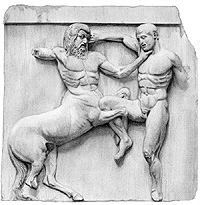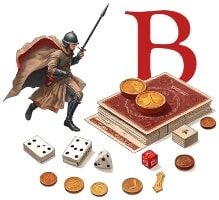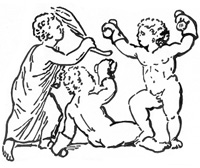This article is part two of ‘You’re Weak’.
Each type of violence below will be addressed in four parts:
-1. Definition
-2. My Personal experience
-3. Social dynamics
-4. Aggression Arc Dynamics
Aggression Arc
-Play fighting
-Informal Fighting
-Formal Fighting
-Casual Attacks
-Serious Attacks
-Predatory Attacks
-Extra-Predatory Attacks
Play Fighting
Play fighting is typically engaged in by household pets and children and is defined as a voluntary activity underlined by a tacit agreement not to do harm.
As a weak-bodied and soft-minded boy, I was always reluctant to play fight. However, adults and groups of older children often pressured me into play fighting. In most cases my suspicions that play fighting was not to be playful for me, but painful and shameful, came to fruition as I was often tormented, tortured, humiliated and once even repeatedly thrown back into the ocean even as I swallowed water and panicked. For instance, my uncle would tell me to go wrestle with his much larger and older son, stating that it was for my personal development, only to have my cousin practice potentially crippling techniques such as the Full Nelson and the Boston Crab in sadistic glee. I learned early, as a physically helpless boy of 4-11 in the hands of larger boys and young men, that for a weakling like me, play fighting was a trap and that as soon as my partner gained dominance than he would seek to physically and spiritually damage me, counter to the purpose implicit in play fighting, which was the rationale that adults in my world used to encourage me to submit to one-sided play fights. To this day I would rather BE KILLED rather than submit to play fighting.
Play fighting is a crucial aspect of development among predatory animals and social sorting among children. This process correctly sorted me out as defective by the time I was 7 years of age.
Persons [such as my once sadistic cousin, now a kind man] who form identity characteristics strongly influenced by dominance in play fighting adapt poorly to predatory aggression [he was later successfully pack-attacked twice] and also tend to fail in confrontations against trained fighters, such as when I knocked him out on his feet when he conducted a casual attack against me when I was 14 and 143 pounds and he was 18 and 230 pounds. I learned in this last encounter that I had to go for the kill to finish such a large man and since he was my mother’s nephew and I had two choices, let him recover and get injured and shamed, or try to kill him and see Mom cry if I succeeded, I ran into the woods and grabbed my spear and war club and decided to only kill him if he pursued me. I would later fall prey to an attack by two men based on my confidence in my face-to-face one-on-one fighting ability misleading me into being ambushed. However, my experience enduring trust-enabled attacks helped me survive the encounter and prevail.
Hundreds of interviews have demonstrated also that people who are adept at predatory aggression are usually not good at play fighting and adults with the temperament to play fight tend not to be emotionally suited for predation.
In terms of social evolution play fighting is foundational to informal fighting, formal fighting, preparation for formal fighting [sparring] and extra-predatory attacks.
Informal Fighting
Commonly called street-fighting, bar-fighting, brawling or scrapping, informal fighting is legally defined as mutual combat, in that both parties volunteer for the activity. This is similar to play fighting in that dominance is the goal. However, the antagonists are understood to be attempting to harm each other physically as well. Since modern society both worships the human body and regards it as property of The State, it is against most law codes for two men to fight, in that they have the capacity to damage the Atheistic God Vessel and State Chattel that is the human body. This is reflected in the fact that most modern humans credit the victory in a fight based on physical damage done rather than spiritual damage or the breaking of the human spirit, which is the ancient measure of victory.
I was shamed into one such fight as a boy by teens who assigned me to fight a larger boy and then helped him hurt me. I conducted seven match fights as a physically mature teen. The outcomes generally featured one antagonist being emotionally damaged and humiliated and the other being physically damaged. I also agreed to a handful of such fights as a man with workplace bullies. I was able to manage all of the lead-ups to these fights in such a way as to enhance my social status and also convince my antagonist to withdraw his challenge.
Informal fighting is the primary source for formal fighting, with such mutual agreements eventually coming under the sanction of respected onlookers [seconds, moderators, elders] who eventually evolve into coaches, referees and judges. This evolution is fueled by the symbiosis of spectators and combatants, with the former offering increased social status in return for vicarious experience and entertainment provided by the combatants.
The fate of indigenous English soccer hooligans falling prey to Islamic gangs is a good example of informal group fighting setting sub-lethal brawlers up to be taken down by criminal predators and law enforcement. Likewise, numerous examples of individual street-fighters challenging trained ritual combatants to fighting and then getting “knocked the fuck out” point to informal fighting as a slippery aggression slope.
Formal Fighting
Combat sports including wresting, boxing, MMA and stick fighting and also lethal dueling with blades and pistols are formalized or ritual combats.
My experience with ritual combat has tended to reduce my participation in all other forms of violence and to help me minimize and survive encounters I am unable to avoid altogether, as my ego is attached to ritual combat and not other forms of violence.
Socially, individual ritual combat and even organized group combats, serve numerous functions:
-Physical conditioning
-Spiritual conditioning
-Venting and sublimating masculine aggression
-Social distraction for spectators
In relation to other forms of violence, combat sports might be preventative, preparatory, inspirational, misleading and even tactically disarming. Combat athletes who come of age in predatory or socially asymmetrical environments tend not to deal with criminal violence according to the ritual parameters of the arts they practice, though they might use technical methods such as punching, while those who live in cushy suburban or socially symmetrical rural circumstances tend to fall into pack attack traps and to be stabbed and shot by individual antagonists. The fate of Baltimore area bar bouncers and boxers being gunned down and stabbed to death is typical of the latter lack of adaptability and reflective of the rapacity of antagonists who feud with men they deem unbeatable in an informal fight. Also, a Baltimore area martial arts instructor being stabbed while he was slapping a triangle hold on a knife-armed man in a bar fight, also points to the limited utility of applying ritual combat forms to spontaneous encounters. An excellent historical example of this is that dueling with the sword favored the point but that battle favored the edge, with battle and dueling swords of the early modern period having very different designs.
Review of Fighting
Fighting between members of the same society is limited to
-Play fighting [practice combat]
Intended to be nonlethal and physically non-damaging
-Informal fighting [mutual combat]
Intended to be nonlethal and damaging, with a rare risk of death
-Formal fighting [ritual combat]
Intended to be lethal or nonlethal with risk of death ranging from the 4-5 fatalities a year in modern boxing to the roughly 40% fatality rate of dueling with heavy blades. The social grace of ritual combat is that the opponent who survives physically rarely suffers spiritual damage but is made emotionally stronger where play fighting tends to spare the body and damage the spirit of the loser. In general fighting requires increasingly high levels of empathy, with empathy in play fights necessary to sustained participation, empathy in informal fights often resulting in friendship after contact and empathy in ritual combat predictive of success, with high levels of skill and empathy tending to converge in such aspects as rhythm, time and measure and feinting.
Part 3 will cover predation or attacks by members of the same society.
Being a Bad Man in a Worse World
Fighting Smart: Boxing, Agonistics & Survival











